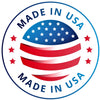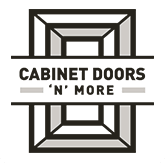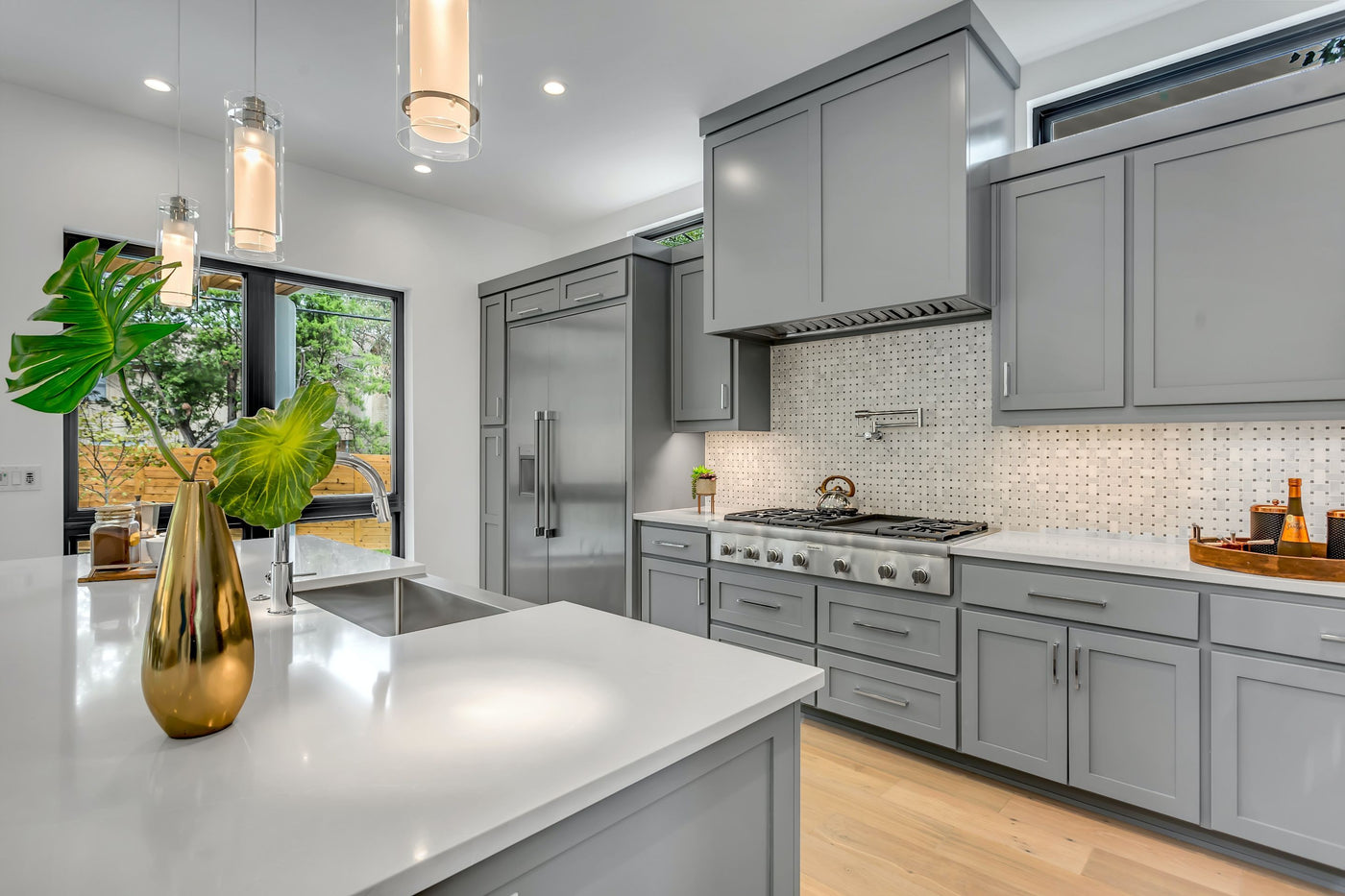
The kitchen is the heart of the home, so having a design you're happy with makes all the difference. One of the simplest and most cost-effective ways to refresh your kitchen is with new cabinet paint. If you're considering starting a DIY kitchen cabinet painting project, then there are some important considerations to look at before you begin. One of the critical factors is which type of brushes are best for cabinets.
Cabinet Doors' N' More explains which brushes to use when painting kitchen cabinets and which work with various paint types. We'll help you look at your project and decide which brush types and sizes you need for a more efficient project and stunning outcome.
TYPES OF BRUSHES
There are dozens of paintbrush types and ways to classify them. One of the main ways to distinguish paintbrushes is by their bristle material. From natural or synthetic bristles to different kinds of foam, there are many materials to choose from.
Selecting the correct type of brush material or bristle is not just a matter of preference. The brush's material can impact how the bristles pick up and apply paint on a surface and the painting process's overall efficiency. Additionally, some bristle types are better suited for certain types of paint, so knowing what type you plan to use is essential before selecting your brush.

NATURAL BRISTLES
Brushes with natural bristles are the quintessential paintbrush that most people know. Typically derived from boar or hog hair, natural bristle brushes are less common today. Many professional and hobbyist painters prefer them for certain jobs, including cabinet painting.
Natural bristle brushes are highly reliable at spreading thick paint evenly onto a surface. They're also preferred for maneuvering in tight areas as their natural stiffness can provide more precision. This versatility makes brushes with natural bristles suitable for small or large projects.
Natural bristle brushes are best for oil-based paints, but you can also use them with latex and acrylic paints. Natural bristles are also suitable when applying a water-based primer. One of the significant drawbacks of bristle brushes, whether natural or synthetic, is that they tend to leave behind evidence of brush strokes. That's why it's important to learn the proper application techniques for bristle brushes if you choose to use this type of paintbrush.
Compared to foam or synthetic brushes, natural bristle brushes are more expensive because they're costlier to produce. However, brushes with natural bristles tend to hold up better over time and break less frequently than foam brushes. As long as you keep your natural bristle paint brushes clean and well cared for, you can expect to use them on countless projects in the future.

SYNTHETIC BRISTLES
Synthetic brushes are a cost-effective alternative to natural bristle brushes. Unlike natural brushes, synthetic brushes are made from nylon, polyester or a mix of both materials. Synthetic brushes don't tend to cause as much shedding during the first application.
Synthetic bristle brushes can replicate the same style and application as natural bristles so that you can use them for similar purposes and capacities. Synthetic brushes come in a range of sizes and shapes, so you have plenty of options. They offer great paint pick-up and provide a smooth finish. They potentially leave behind fewer brush strokes than natural bristles, which are sometimes coarser and stiffer than synthetic bristles.
You can use synthetic bristle brushes with similar paint types as natural bristles, and they're also good for high-gloss finishes because of their smooth application from the pliable bristles. This makes synthetic bristles ideal for cabinet finishing, whether it's wood, composite or metal cabinet material.
Unlike natural bristles, synthetic bristles wear down sooner after multiple applications. However, the replacement cost on synthetic bristle brushes is usually more affordable than with natural bristles. As with all tools, regular upkeep and maintenance can help extend the service life of your synthetic brushes.

HYBRID
When you're not sure whether natural or synthetic brushes are right for your cabinet painting project, why not combine both? Hybrid brushes are a unique type of brush made from both natural and synthetic fibers. With a hybrid brush, you get the best of both worlds 一 the longevity and efficiency of a natural brush with the superior smoothness and control of synthetic brushes.
In a hybrid brush, each bristle type serves a unique purpose. The natural bristles, which are usually shorter, help to absorb and retain paint for improved distribution. The longer synthetic bristles encourage a smooth finish and reduce obvious brush strokes.
Hybrid brushes allow cabinet painters to apply a thick, even coat efficiently with less worry of leaving behind brush strokes. They also help you transition between coats. From primers to paints to finishes, hybrid brushes are an all-in-one tool that can help save you time and money on your project investment.
Most hybrid brushes are more expensive than an average synthetic brush. Some can be more affordable than 100% natural bristle brushes.

FOAM
Foam brushes are a complete departure from the other three types of brushes. Available in different foam types, foam brushes range widely in quality. High-quality foam brushes are made from dense, highly absorbent foam to encourage greater efficiency and application. Some foams are thinner, which leads to time-consuming applications. Those who choose foam brushes prefer this style because it leaves less noticeable brush strokes with proper techniques.
Compared to bristle brushes, foam brushes are very cost-effective. They're an easy investment, so you can get a variety of sizes to help with broad application to precision finishing. Many painters also prefer to use foam brushes for staining woods.
You get what you pay for with foam brushes. Invest in higher-quality foam brushes with dense foam, good-quality glue and a securely-attached head for larger projects. Because foam brushes are so affordable, many people prefer to use them with oil-based paints, which are often more difficult to remove from brushes. If it's too difficult to clean off foam brushes, you can easily discard and replace them.

DIFFERENCES OF BRUSHES WHEN PAINTING
The best way to paint cabinets is to consider the application, weigh different brush types and choose a brush to match your cabinet needs. The top application differences between different brush types include:
-
Brush vs. roller:Whether you should use a brush or roller to paint cabinets depends on personal preference, comfort and skill level. If this is your first paint project, you might feel more comfortable using a mini roller to perform the bulk of the application, followed by smaller bristle or foam brushes for the finer details. You can also use a combination of both — a roller for priming and a brush for painting.
-
Firmness:One way to get a smooth finish when painting cabinets is adequate firmness. Softer bristles are more supple and maneuverable but less efficient at even application. Stiff bristles distribute paint more evenly and broadly, making them a more efficient tool. If you're staining rather than painting cabinets, then soft bristles are a better option.
-
Size:The brush size makes a significant difference in paint application. You should match the size to the work surface size to maximize efficiency and coverage. For cabinets, you may need a couple of different sizes — one medium-sized primary brush to cover the main, broad surfaces, and a smaller brush for the narrow edges and any details like cabinet rails.
-
Angle:Brushes can either be flat or angled, while rollers are only flat but do have angled handles available. Angled brushed are some of the best brushes to use when painting kitchen cabinets because it allows you to use a top-to-bottom single stroke for better application. Specialty brushes also have angled handles to reach into back corners inside the cabinets.
-
Comfort:The final consideration for brush choice is comfort level. Painting is a repetitive motion that can cause cramping, so finding the right brush for your ergonomics is helpful. Consider handle material, such as wood, plastic or metal, as well as handle length. Shorter handles give you more precision and concentrate the overall movement toward the wrist.

WHY THE BRUSH MATTERS
When taking on a cabinet painting project, many people grab the first brush on the shelf. But with such a range of different brush styles, designs, materials and more to consider, it's clear that your decision should have some strategy behind it. If you're choosing a brush for your kitchen cabinet painting project, consider how your brush can streamline the project.

EFFICIENCY
One of the main reasons to choose the right brush is to increase efficiency. Many people get fatigued after only a few minutes of painting. With cabinet painting, the project is often bigger than expected. More than the doors need painting — it's often also the inside boxes, shelves and sometimes even drawers. It's important to work as efficiently as possible and conserve time, energy and paint products.
With the right brush, you can apply paint quicker, smoother and more evenly, reducing the need for rework and product over-consumption. The right brush will absorb the correct amount of paint and apply it in an effective layered way. Using a combination of different brushes designed for different aspects of the job also improves efficiency. This includes selecting an array of brush sizes and thicknesses for the different areas of the project.
COST
Using the correct tools can even save you money. Investing in proper tools makes the entire project worth it by increasing your return on investment. By choosing the right brush, you can save on direct and indirect project costs by:
- Reducing the amount of paint used by maximizing absorption and application.
- Decreasing the number of coats needed.
- Limiting the amount of time it takes so you can take on other projects or work.
- Preventing costly errors that require more products or solutions to fix.
- Preserving expensive brushes for future use with other household projects.
Choosing the right type of primer, paint, stain or finish for your kitchen cabinets, along with the correct brushes, makes your project more cost-effective.
QUALITY
Knowing the right brushes to use when painting kitchen cabinets ensures you get a quality finished product. Which brush you use for kitchen cabinet painting makes a big difference in how the cabinets will look at the end of the project. Without the right brush, you may end up scrapping the project and starting over. Or you may end up living with an outcome you don't love.
If you're a DIY beginner, choosing the right brush is even more important since you don't have the skill or the experience to help you. Experienced painters prefer to use the best tools for the job, including the right set of brushes required for cabinet painting. With the right tools, you can ensure a quality result that avoids streaks, applies evenly and looks good for years to come.
4 CONSIDERATIONS WHEN CHOOSING THE BEST BRUSH FOR YOUR APPLICATION
Paintbrush selection should be the very last decision made when planning your cabinet painting project. That's because every other factor about the project determines the type of brush or brushes you will need. It's important to choose the best tools that fit the job, rather than making the project fit the tools you have.
When choosing the brushes you need for painting your cabinets, look at the unique needs of your project. From project size to the type of paint you plan to use to the unique style of the cabinets themselves, there are many factors to look at before selecting your brushes. Additionally, you must also plan ahead for the common pitfalls of selecting the wrong brush, including how to work around a brush that may leave behind streaks.

1. PROJECT SCOPE
You want to choose brushes that will withstand the scope of the project. To do so, you must first realistically assess the full size of the project. This will help you not only determine the correct amount of paint to use but also how many paint different brushes you will need.
If you have a large kitchen with multiple walls' worth of cabinets, then you should purchase a backup brush or two in case your brush becomes damaged and unusable partway through. Additionally, if it's a large project, then you may plan to have someone help you. Investing in multiple brushes can help ensure faster and more efficient work.
Another important factor is knowing which surfaces will be painted. You might divide your project into phases, starting with upper cabinets and eventually moving on to lower cabinets in a second phase. Consider whether you will be painting the inner portions of the cabinets or only the doors. Painting the insides of the cabinets may require different kinds of brushes, such as ones with an angled handle that allow you to cut into corners easier.
Knowing your full project scope will help you decide how many brushes you need and the different types of brushes for various parts of the job.
2. TYPE OF PAINT
When choosing the right brush for your kitchen cabinets, you need to have the paint type in mind. The paint base plays a crucial role in how the brushes perform, with some paints causing bristles to become too soft to spread the paint evenly and preventing progress.
Below are some common types of paint and which brushes are most compatible with each one:
-
Oil-based paint:Professionals tend to prefer to use natural bristle paint brushes for oil-based paints. These bristles hold their shape and stiffness, increasing application efficiency and ensuring smoothness. Synthetic bristles, whether they're nylon, polyester or both, tend to turn limp in oil, making the application more difficult.
-
Latex paint:Unlike oil-based paints, latex paints don't cause increased softening on polyester or nylon bristles, allowing these types of brushes to maintain their stiffness. Matching latex paint with synthetic bristle brushes can help ensure quick work and a smooth finish. Latex paint is also easy to clean off of synthetic bristles.
-
Finishes:Whether you choose a varnish, polyurethane, shellac or lacquer, different finishing products may require different brush types, depending on the desired final results. Because you want the smoothest finishing coat possible, you'll need a brush that encourages even application. Either foam or hybrid brushes that are smooth yet maintain their shape are ideal for finishing products.
3. SURFACE SIZES AND ANGLES
Knowing how large the surfaces are and any unique millwork angles or details will help you choose the right size and shape of the brush. Generally, a brush between 2 and 2.5" will be sufficient for painting most standard kitchen cabinets by hand. Consider the brush design and which brush shape will work best for your cabinets. A flat brush may allow you to cover more surface area, working well for flat cabinet doors and the inner shelves.
If you have cabinets with molding on the doors, an angled sash brush will help you cover molded edges and prevent noticeable gaps. Additionally, consider whether your cabinets have crown molding between the top of the cabinet and the ceiling and whether a regular flat brush will provide adequate paint coverage along this space. Using a separate two-inch angled brush will help you get the precision you need to cut in between the molding and the ceiling.
For even tighter corners, consider stepping down to either a flat or angled brush that's 1 to 1.5" for finer control and precision.
4. MINIMIZING BRUSH STROKES
The final consideration is preventing brush strokes. Knowing how to prevent brush marks when painting cabinets requires the right brush type and the proper technique.
Some of the easiest ways to paint cabinets without leaving behind brush strokes include:
- Prep your cabinets and create a smooth, adherent working surface by cleaning, sanding and removing scratches and imperfections.
- Prime the cabinets with a paint primer to ensure smooth paint application.
- Use a paint conditioner to even out the paint mixture and help with evenness.
- Paint in the direct direction of the wood grain to help any brush marks blend in with the grain.
- Hang cabinet doors horizontally to dry, allowing gravity to pull the paint downward and conceal any brush strokes.
Following the above measures will help your chosen brush to work optimally. A clean and smooth surface that's been sanded and primed will allow your brush to glide over the cabinets easier, depositing the paint evenly and in a way that ensures it will stick to the surface correctly.
CHOOSE CABINET DOORS' N' MORE FOR YOUR CABINET UPDATES
Get the beautiful kitchen cabinet features with Cabinet Doors' N' More. Our easy process allows you to select the cabinet doors, drawer boxes and drawer fronts custom to your kitchen, simplifying your upgrade process. Choose from classic wood types, including red oak, maple and cherry, or select the popular rigid thermofoil style in a range of modern colors.
Fill out an online form or call us at 844-948-1212 for more information on ordering your custom kitchen cabinet door replacements.

Learn More About Painting & Staining Cabinets













